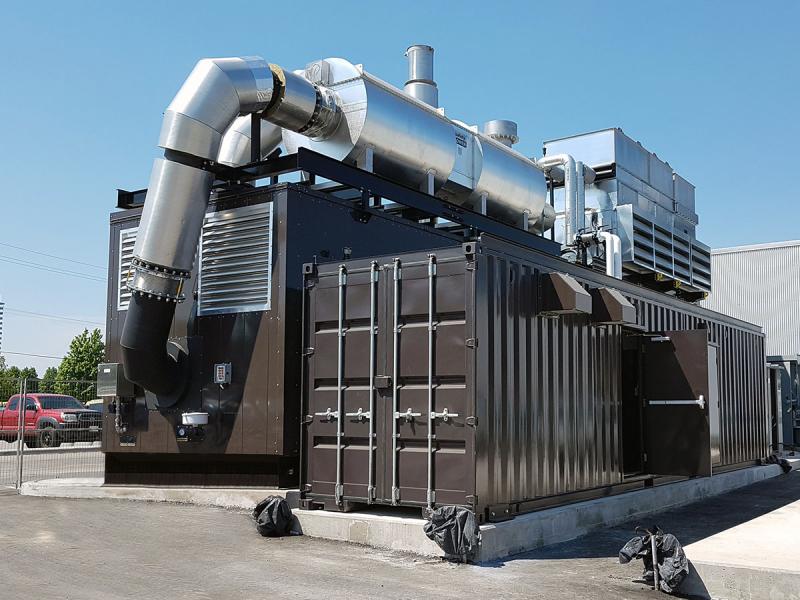As power demands continue to rise across industries and communities, producing energy efficiently while reducing carbon footprint is increasingly important. Combined heat and power (CHP), also known as cogeneration, provides a viable solution through simultaneous generation of usable heat and power from a single fuel source. By capturing and utilizing the heat that would otherwise be wasted, CHP systems can achieve efficiencies of over 80% compared to just 35-45% for conventional separate heating and cooling systems. This article explores the benefits of CHP technology and how its adoption can positively impact energy needs.
What is CHP?
CHP systems generate electricity and capture heat from a single fuel source such as natural gas, biomass, biogas or coal. The high temperature flue gases from fuel combustion are first used to power a turbine or engine for electricity production. The waste heat from this process is then recovered to provide heating, hot water or steam. Depending on application, CHP systems can range in size from 30 kW for small commercial buildings to over 50 MW for large campuses or districts. While most commonly used in industrial processes requiring both power and heat, CHP has many other applications as well.
Benefits of CHP Systems
CHP provides multiple economic and environmental benefits compared to conventional systems:
Increased Efficiency: By capturing waste heat that would otherwise be lost, CHP can achieve overall fuel efficiencies up to 80%. This is significantly higher than the average 35-45% efficiency of separate heat and power generation.
Lower Energy Costs: CHP helps reduce operating costs through lower fuel consumption. Some estimates indicate energy cost savings of up to 20-30% compared to separate systems. Maintenance costs are also lower due to fewer components.
Enhanced Reliability: On-site power generation provides a reliable backup source in case of grid outages. Critical facilities such as data centers, hospitals benefit from this resilient energy supply.
Emission Reduction: Due to greater efficiency, CHP lowers greenhouse gas and other pollutant emissions per unit of energy produced. Some systems can reduce CO2 by up to 40% relative to conventional methods.
Economic and Job Growth: Deployment of CHP expands domestic manufacturing and construction industries. Studies show billions in economic output and thousands of direct and indirect jobs are created through its adoption.
Applications
With scalable designs, CHP has found widespread applicability across many sectors:
Industrial Facilities: Process plants for manufacturing, chemicals, food, metals etc. derive huge energy savings from CHP to meets steam and electric needs simultaneously.
Healthcare Centers: Hospitals, nursing homes utilize CHP for critical services with back-up power as well as lower operating costs. The technology is ideally suited for around-the-clock high thermal and electric loads.
Campuses & Districts: Large universities, municipalities, military bases benefit from centralized CHP providing steam, hot water and electricity across multiple buildings efficiently.
Commercial Buildings: Hotels, apartments, malls see significant gains as CHP fulfills their heating, cooling and power loads all year round. It creates comfortable, reliable environments.
Waste to Energy: Landfill gas, biomass gasification are renewable fuel sources that CHP utilizes productively to make dual outputs of baseload renewable power and thermal energy.
Policy Support and the Road Ahead
While Combined Heat And Power has substantial advantages, some barriers remain around high upfront costs, interconnection challenges and lack of awareness. To overcome these hurdles and facilitate large-scale roll out, supportive policies are needed.
The federal government under the Infrastructure Investment and Jobs Act has allocated billions towards CHP incentive programs, tax credits, research funding and workforce development initiatives. With such public investments in distributed energy resources, new CHP capacity additions are estimated to grow over 50 GW by 2050.
Individual cities and states are also enacting their own customized legislation to spur in-state manufacturing and procurement of CHP systems. Mandating interconnection standards streamlines project development. Beneficial policies include investment tax credits, rebates for commercial and industrial customers, greenhouse gas credit trading and more.
As energy and environmental goals stiffen nationally and globally, technologies like combined heat and power will remain integral to achieving efficiency, resiliency and sustainability targets economically. With the right market signals and collaborations, the immense untapped potential of CHP can be effectively harnessed for communities, businesses and industries alike.
Explore more information on this topic, Please visit -
https://www.newswirestats.com/combined-heat-and-power-chp-market-share-and-demand-analysis/
Explore more trending article related this topic -
https://captionssky.com/industrial-laser-systems-revolutionizing-precision-manufacturing/
https://captionssky.com/isohexadecane-a-synthetic-emollient-for-wide-range-cosmetic-applications/
https://www.pressreleasebulletin.com/refurbished-electronics-market-trends-size-and-share-analysis/
